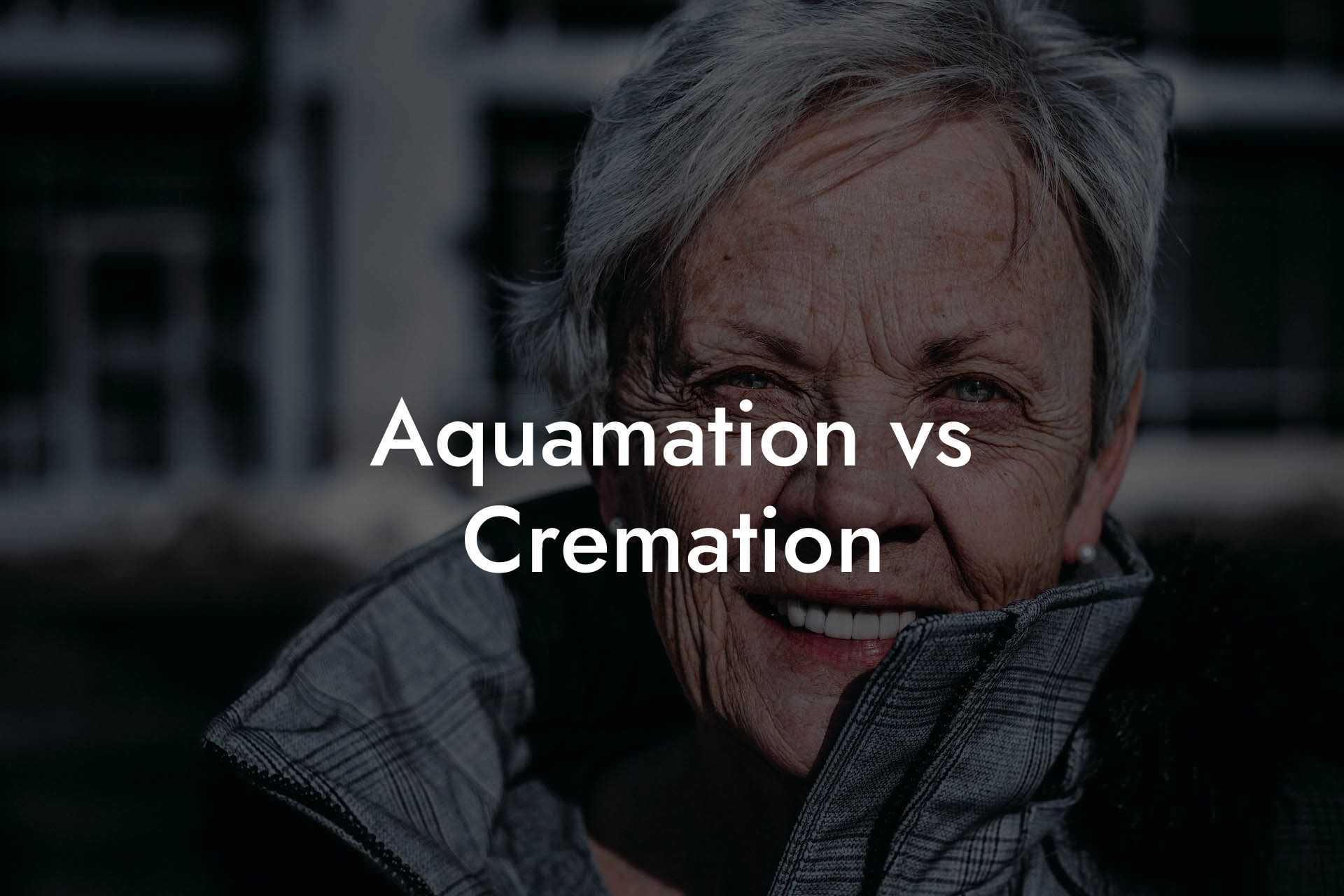Imagine a world where saying goodbye to a loved one is not only a celebration of their life but also a gentle farewell to the planet. Welcome to the world of aquamation and cremation, two eco-friendly alternatives to traditional burial methods that are changing the way we think about death and the environment. Whether you're planning ahead or coping with a recent loss, this comprehensive guide will walk you through the ins and outs of aquamation and cremation, helping you make an informed decision that honors your loved one and the planet.
Quick Links to Useful Sections
What is Aquamation?
Aquamation, also known as alkaline hydrolysis, is a water-based process that breaks down human remains into their basic elements. This eco-friendly alternative to traditional cremation uses a solution of water and alkali to accelerate the natural process of decomposition, leaving behind only bone fragments and a sterile liquid.
The aquamation process typically takes several hours, depending on the size of the body and the equipment used. The resulting bone fragments are then processed into a fine powder, similar to traditional cremated remains.
What is Cremation?
Cremation is a high-temperature process that reduces human remains to their basic elements, typically through the use of fire. This traditional method of body disposal has been used for centuries, with the resulting ashes often placed in an urn or scattered in a special location.
The cremation process typically takes several hours, depending on the size of the body and the type of equipment used. The resulting ashes are then processed into a fine powder, often accompanied by a small amount of bone fragments.
Aquamation vs Cremation: Key Differences
While both aquamation and cremation are eco-friendly alternatives to traditional burial, there are some key differences between the two processes.
- Environmental Impact: Aquamation uses significantly less energy than cremation, making it a more environmentally friendly option. Additionally, aquamation produces a sterile liquid that can be safely discharged into the sewer system, whereas cremation releases pollutants into the atmosphere.
- Cost: Aquamation is often more expensive than cremation, due to the specialized equipment required for the process.
- Appearance of Remains: Aquamation produces a finer, more uniform powder than cremation, which can result in a more aesthetically pleasing appearance.
- Acceptance: Cremation is widely accepted and available in most funeral homes and crematories, whereas aquamation is still a relatively new and emerging technology, with limited availability.
Benefits of Aquamation and Cremation
Both aquamation and cremation offer several benefits over traditional burial methods.
- Environmental Benefits: Both processes reduce the environmental impact of traditional burial, which can include the use of embalming fluids, caskets, and land for burial.
- Cost-Effective: Both aquamation and cremation are often less expensive than traditional burial methods.
- Flexibility: Both processes allow for a range of memorialization options, including scattering, burial, or placement in an urn or columbarium.
- Personalization: Both aquamation and cremation offer a range of personalization options, including the use of biodegradable urns or unique memorialization services.
Challenges and Controversies
While both aquamation and cremation offer several benefits, there are also some challenges and controversies associated with each process.
- Aquamation: The relatively new technology and limited availability of aquamation can make it difficult to find a provider in your area. Additionally, some people may be uncomfortable with the idea of a water-based process.
- Cremation: Cremation can release pollutants into the atmosphere, contributing to climate change and air pollution. Additionally, some people may be concerned about the high temperatures used in the cremation process.
Resources and Community Support: Your Next Steps
If you're considering aquamation or cremation for yourself or a loved one, there are several resources available to support you.
- Funeral Homes and Crematories: Many funeral homes and crematories now offer aquamation and cremation services. Be sure to research providers in your area to find one that meets your needs.
- Online Resources: There are several online resources available, including the International Association of Alkaline Hydrolysis Providers and the Cremation Association of North America.
- Support Groups: Many organizations offer support groups for people coping with loss, including the National Funeral Directors Association and the Hospice Foundation of America.
Frequently Asked Questions
Here are some frequently asked questions about aquamation and cremation:
1. Is aquamation legal?
Yes, aquamation is legal in many countries, including the United States, Canada, and the UK.
2. Can I witness the aquamation or cremation process?
Yes, many providers offer the option to witness the process, although this may vary depending on the provider and local regulations.
3. Can I pre-plan for aquamation or cremation?
Yes, many providers offer pre-planning options, allowing you to make arrangements in advance and ensure that your wishes are respected.
4. Are there any religious restrictions on aquamation or cremation?
Some religions may have restrictions or prohibitions on cremation or aquamation, so it's essential to research the specific beliefs and practices of your faith.
5. Can I scatter the remains in a special location?
Yes, many people choose to scatter the remains in a special location, such as a park, ocean, or mountain. Be sure to research local regulations and obtain any necessary permits.

